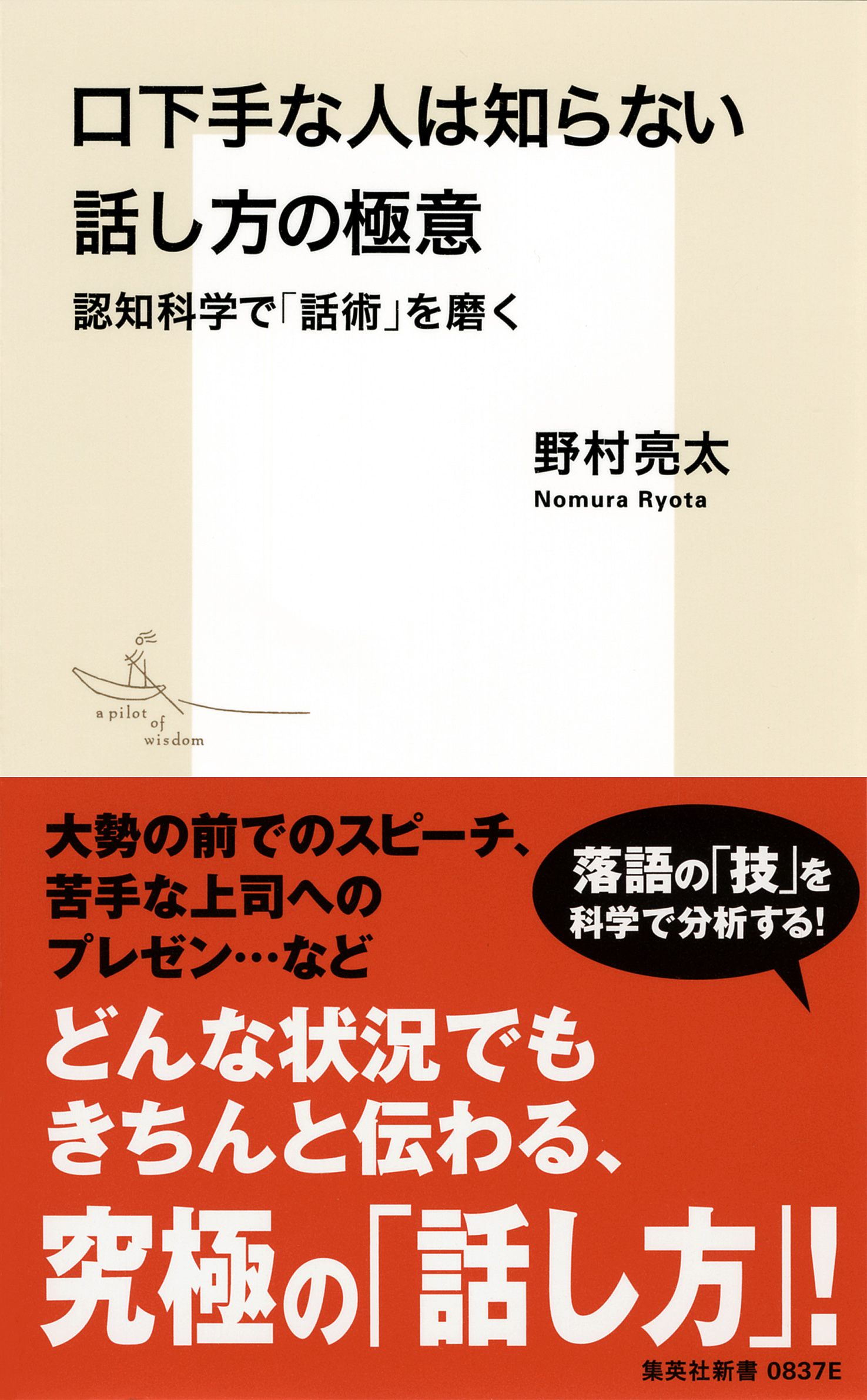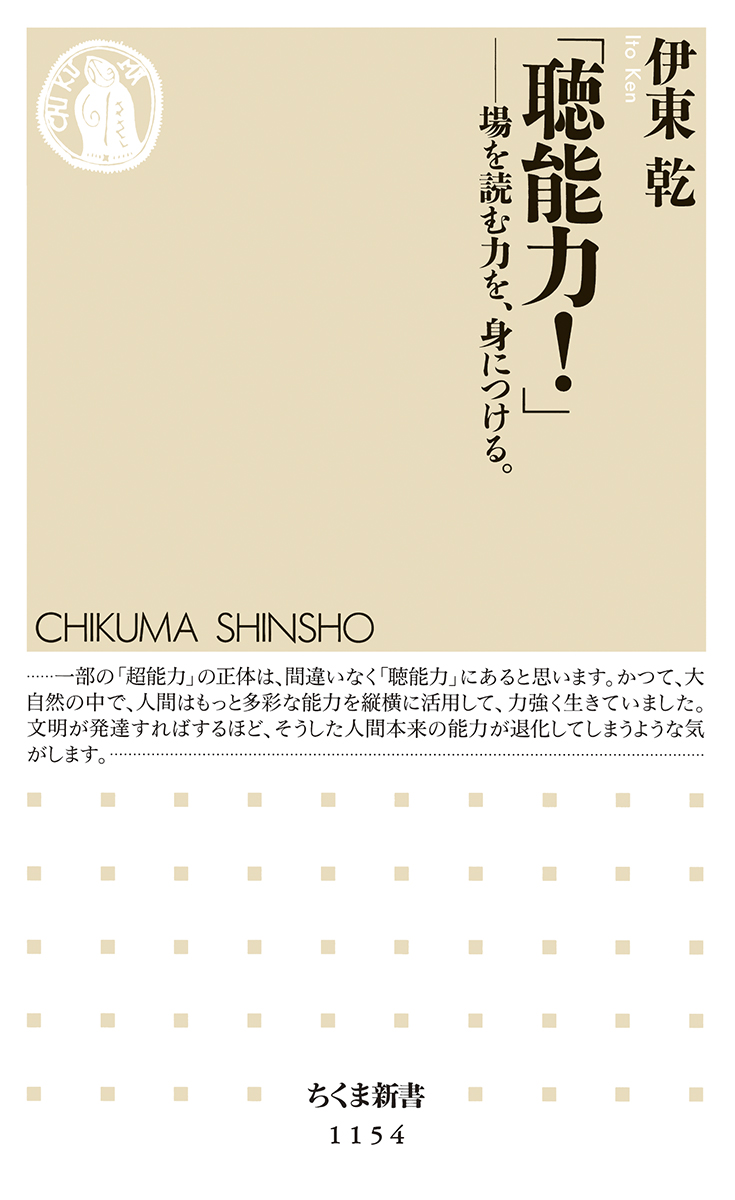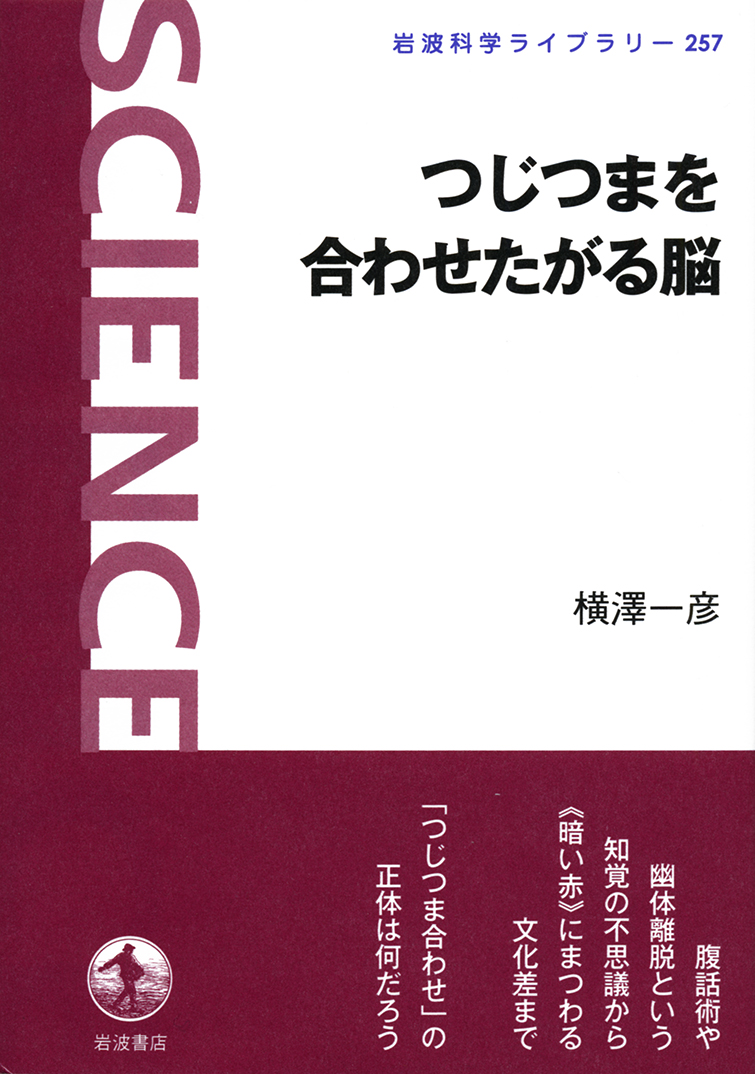
Title
Kuchibeta na Hito ha Shiranai Hanashikata no Gokui (Ultimate Speech Technique for Clumsy Talkers: Polish Your Art of Speech with Cognitive Science)
Size
251 pages
Language
Japanese
Released
June, 2016
ISBN
978-4-08-720837-5
Published by
Shueisha Shinsho
Book Info
See Book Availability at Library
Japanese Page
“Ma” is a Japanese expression that often comes up in our day-to-day conversations, as in “he uses ma effectively in his speeches (his speeches are easy to listen to as he uses pauses effectively)” or “that man doesn’t speak very much and I can’t handle the ma very well (I feel ill-at-ease with the intermittent silence).” These remarks hint at the possibility that ma (a pause) is essentially relevant to the way we speak. However, we cannot give a straight answer to the question, what is ma? This book introduces specific methods to help people who feel clumsy in speech to improve their art of speaking, thereby answering some questions such as to what exactly it takes to speak in front of a large audience and what ma is in speeches.
In the book, we look at a professional in speaking, that is, a Rakugo performer (hanashika), and his audience in terms of their behaviors, introducing knowledge in cognitive science revealed from the findings. In particular, Chapter 7 addresses two concepts, ma and ba (a place), which are used on a daily basis. It attempts to formalize them into the expressions verifiable in empirical studies. Furthermore, it describes how the competence of the hanashika can be revealed by the extent to which the blinking of eyes is synchronized in the audience. The fact that the audience’s blinking synchronizes more as they are drawn into the story came to my attention as I frequented Rakugo theaters in Tokyo to observe audiences’ motions and postures. This is an index verified for generalizability and that applies to diverse situations that involve human speech, through repeated empirical considerations. This is not something that can be discovered one day out of the blue. The knowledge imparted here is the outcome of continued research over several years during which the author made a decision to study the refined skills of Rakugo performers, going out in the field in search of uncharted phenomena. For readers with sound intellectual curiosity, who are about to embark on their own research, this book will introduce a history of research by one researcher.
Naturally, it can also be enjoyed more casually. Knowledge based on research in cognitive science permeates the text. Readers will thus be acquainted with this branch of science through specific cases presented in the chapters. For instance, people usually understand texts and stories by developing mental models in their minds. This book explains this concept, mental models, in the descriptions about a dodoitsu song. “Sound of the bell at dawn, a crescent-shaped comb for women on the floor of a small bedroom.” Dodoitsu is a form of artistic story-telling, and the above passage alone stimulates the audience’s imagination. Using the dodoitsu as an analogy, it becomes clearer that the mental model “helps with understanding even with some details missing” and “new information can be added to update the model.” Cognitive science addresses real-life intelligence such as this, rather than ‘cool’ intelligence removed from a context. This book reveals in this way that our day-to-day environment is not as far from the world of research as we may believe. Research materials may just lie on your doorstep. I hope this book can help readers to open up to this possibility.
(Written by Ryota Nomura, Research Assistant Professor, Graduate School of Education / 2018)



 Find a book
Find a book



